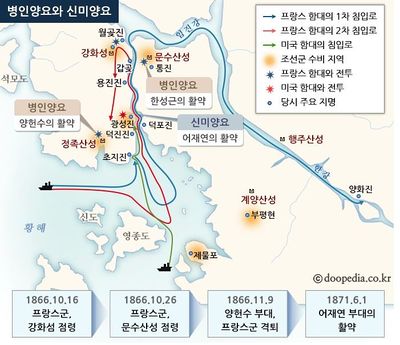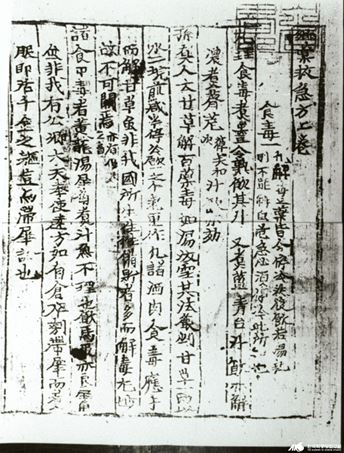"2018 GGHS Team 8"의 두 판 사이의 차이
(→(1)infectious disease) |
(→(1)infectious disease) |
||
| 62번째 줄: | 62번째 줄: | ||
==Infectious Disease Of Goryeo== | ==Infectious Disease Of Goryeo== | ||
===(1)infectious disease=== | ===(1)infectious disease=== | ||
| − | + | ||
Unlike the Three Kingdoms Period, during the Goryeo Dynasty, Medical science has advanced even more.In addition to the expression "disease " in the name of " three kingdoms of Goryeo, " the names are written as "Treatise on Warm" or " miasmal diseases and epidemics. "The official record of the history of Goryeo which lasted for 475 years. The incidence of disease was only 20 times. In addition, you can check out the literary collection only 37 times. | Unlike the Three Kingdoms Period, during the Goryeo Dynasty, Medical science has advanced even more.In addition to the expression "disease " in the name of " three kingdoms of Goryeo, " the names are written as "Treatise on Warm" or " miasmal diseases and epidemics. "The official record of the history of Goryeo which lasted for 475 years. The incidence of disease was only 20 times. In addition, you can check out the literary collection only 37 times. | ||
| 72번째 줄: | 72번째 줄: | ||
Fourth, there are a young child's smallpox, and rabies. As you can see below in the <Emergency Remedies of Folk Medicine (鄕樂救急方)>, It was then clearly recognized that rabies was a major disease that was transmitted to a mad dog.It is also noted that the smallpox, is an infectious disease, which needs urgent treatment. The emphasis here is a quick handle. If it is too late, rabies can not be recovered and it could be killed in a day. | Fourth, there are a young child's smallpox, and rabies. As you can see below in the <Emergency Remedies of Folk Medicine (鄕樂救急方)>, It was then clearly recognized that rabies was a major disease that was transmitted to a mad dog.It is also noted that the smallpox, is an infectious disease, which needs urgent treatment. The emphasis here is a quick handle. If it is too late, rabies can not be recovered and it could be killed in a day. | ||
| + | |||
| + | [[파일:캡처.JPG|400px]] | ||
===(2)Therapy=== | ===(2)Therapy=== | ||
2018년 7월 26일 (목) 14:48 판
목차
2018 GGHS 8 Team Information
| Team Position | Name (English) | Name (Korean) | Student ID | Wiki ID |
|---|---|---|---|---|
| Leader | Jo Myeong Ji | 조명지 | 2417 | soo77.mjc |
| Vice Leader | Yu Ji Min | 유지민 | 202514 | wlals8855 |
| Member | Yoon Su Bin | 윤수빈 | 셀 내용 | 셀 내용 |
| Member | Yu Ah Jin | 유아진 | 셀 내용 | 셀 내용 |
| Member | Lee Ho Yeon | 이호연 | 셀 내용 | 셀 내용 |
| Member | Jeong Yu Jin | 정유진 | 1621 | 정유진 |
| Member | Kim Yun Seo | 김윤서 | 1707 | 김윤서 |
| Member | Park Yu Jin | 박유진 | 1710 | 박유진 |
| Teacher | Sribna Zarina | 스리브나 자리나 | - | amyallen |
The history of medicine in Korea
A General Outline
In the 10th century, Balhae was destroyed by Khitan, and Silla, which had been extremely corrupt, was unified into Goryeo after over 30 years of war with Hubaekje and Hugoguryeo. Goryeo, which had to wage many invasion wars after unification, had great social demands on health care businesses in order to protect the lives and health of soldiers and people. Especially, the world's first metal type printing business developed in the 12th century, and the publication and dissemination of science literature books increased greatly, and medical books due to the development of navigation technology, as well. In addition, the diseases treatment awareness has improved greatly, and preventive measures for infectious diseases and more detailed classification have been taken.[1]
The Beginning of Goryeo Dynasty
From the very establishment Goryeo put forward the buddhist meter and confucian-signing politics. In addition, the medical institution was reorganized and strengthened to physicians place in every military unit. It also showed a lot of interest in population growth to strengthen national power and expressed a keen interest in health care projects to improve the health of the ruling class. And they established Hyeminguk (혜민국,惠民局), East and West Infirmaries (동서대비원,東西大悲院) and Jewibo (제위보, 濟危寶) for the poor people and engaged in charitable medical activities.[2]
The Middle Period of Goryeo Dynasty
In this period, due to the revival of Goryeo Dynasty, the interaction with the forming Chinese country of Song Dynasty, and medical exchanges were encouraged, so the exchange of medical books, drugs and medical workers took place in various forms. Moreover, thanks to the development of printing technology, Indian medical books started to be disseminated. After Goryeo defeated the Kitan, the national power became known worldwide, and foreign exchange became more active. It is estimated that in 1010 India's medical books were recorded when creating the first edition of Tripitaka Koreana (초조대장경, 初雕大藏經), but actually they were washed away so it is difficult to identify. The term "herbal medicine" (Korean authentic medicine) appears in the late 12th century. Just like Silla, the rulers of Goryeo Dynasty valued only the Dangjae (medication imported from China) and disdained medicines which were produced in Korea. So when the king became ill, royal court bought expensive Dangjae and invited medical workers from China. However, the poor people started to collect and use herbs directly from the mountains, through the actual use of medicines and exchange from abroad, many people found that the medicines which grew in Korean mountains and stream were effective and due to that, herbal medicine started developing. Accordingly, as entered the 12th century, the good books about herbal medicine began to be written. In particular, the emergency services department was able to use the prescription when it was detailed, available to everyone and there was no urgent need for a doctor. Especially, Hangyakkugeupbang (향약구급방, 鄕藥救急方)'s prescriptions were detailed and accessible to everyone. As its name suggests, it was used when one was in an emergency situation but he or she could not call the doctor.
The Late Period of Goryeo Dynasty
It further strengthened the independent basis of Goryeo medicine by developing the technical books about the herbal remedy, which had been studied since the latter half of the middle period. Goryeo had a smooth cultural exchange with the Great Yuan, as for medical exchanges, especially when the Queen was ill, she invited the Great Yuan doctor to visit her. Also, the Great Yuan king invited the Goryeo Doctor. Over the past 100 years, the Great Yuan and Goryeo exchanged medicines 20 times, and important medical supplies were exchanged too. In 1389, Jeong do-jeon compiled a book called Jinmaek Dogyeol (진맥도결, 診脈圖結) which was an easy explanation of the pulse method. The pulse method is a method of checking the pulse to determine the condition of a disease. It can determine disease symptoms by counting and analizing the patient's pulse and predict its progress and outcome.
The Epidemic and the Cure of Goryeo Dynasty
Infectious Disease Of Goryeo
(1)infectious disease
Unlike the Three Kingdoms Period, during the Goryeo Dynasty, Medical science has advanced even more.In addition to the expression "disease " in the name of " three kingdoms of Goryeo, " the names are written as "Treatise on Warm" or " miasmal diseases and epidemics. "The official record of the history of Goryeo which lasted for 475 years. The incidence of disease was only 20 times. In addition, you can check out the literary collection only 37 times.
For the representative infectious diseases of Goryeo, There is miasmal diseases and epidemics, a popular fever generated by bottling in hot, humid areas. Some people are confused and tired with fever, while others have a stuffy chest and can not speak because of a sore throat. Miasmal diseases and epidemics, which spread from Gaegyeong in 1018, can be thought of as being caused by the war with Yookguk(遼) in 1018. Some people believe that the disease, which was prevalent in Songnara, was introduced to the Yookguk, where it was introduced to Goryeo.
Second, Caused by the uneven weather of the seasons, There is Treatise on Warm , an acute infection that becomes speechless at times, has a small boil on the cheek, a sore mouth and a cough. In 1,100 years, Treatise on Warm an acute epidemic fever, was also a disease from Songnara(宋).
Third, Malari (俺疾) , also called malaria, is an infectious disease carried by malaria mosquitoes. It is a dangerous disease that affects 200 to 300 million people and kills millions each year. Many genetic diseases, including Sickle Cell Anemia, remain because it is strong against malaria. It is also called " malaria " or " day distance " and is a disease mainly developed in tropical areas. It is a disease which mainly develops in the tropics. The first official record on malaria in Korea is during the Goryeo Dynasty. According to the history of Goryeo, people died due to malaria in December of the 17th year of King Yejong(毅宗). The history of Goryeo shows that people died due to malaria in December of the 1122 year.
Fourth, there are a young child's smallpox, and rabies. As you can see below in the <Emergency Remedies of Folk Medicine (鄕樂救急方)>, It was then clearly recognized that rabies was a major disease that was transmitted to a mad dog.It is also noted that the smallpox, is an infectious disease, which needs urgent treatment. The emphasis here is a quick handle. If it is too late, rabies can not be recovered and it could be killed in a day.



